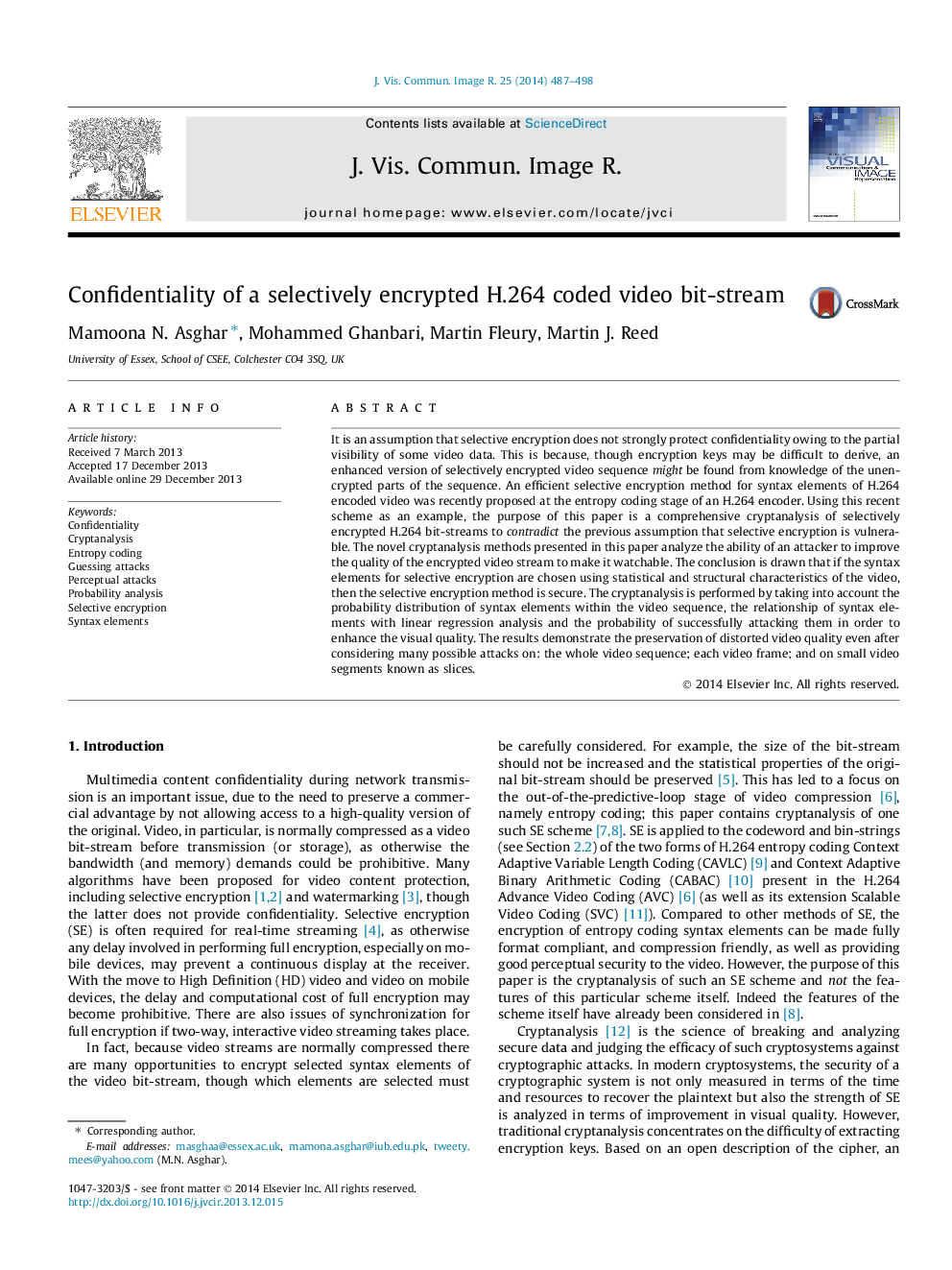| Article ID | Journal | Published Year | Pages | File Type |
|---|---|---|---|---|
| 532477 | Journal of Visual Communication and Image Representation | 2014 | 12 Pages |
•H.264 video coding standard.•Entropy coding syntax elements.•Statistical analysis of entropy coding syntax elements.•Probability distribution of syntax elements in video.•Confidentiality of encrypted H.264 bit-stream.
It is an assumption that selective encryption does not strongly protect confidentiality owing to the partial visibility of some video data. This is because, though encryption keys may be difficult to derive, an enhanced version of selectively encrypted video sequence might be found from knowledge of the unencrypted parts of the sequence. An efficient selective encryption method for syntax elements of H.264 encoded video was recently proposed at the entropy coding stage of an H.264 encoder. Using this recent scheme as an example, the purpose of this paper is a comprehensive cryptanalysis of selectively encrypted H.264 bit-streams to contradict the previous assumption that selective encryption is vulnerable. The novel cryptanalysis methods presented in this paper analyze the ability of an attacker to improve the quality of the encrypted video stream to make it watchable. The conclusion is drawn that if the syntax elements for selective encryption are chosen using statistical and structural characteristics of the video, then the selective encryption method is secure. The cryptanalysis is performed by taking into account the probability distribution of syntax elements within the video sequence, the relationship of syntax elements with linear regression analysis and the probability of successfully attacking them in order to enhance the visual quality. The results demonstrate the preservation of distorted video quality even after considering many possible attacks on: the whole video sequence; each video frame; and on small video segments known as slices.
